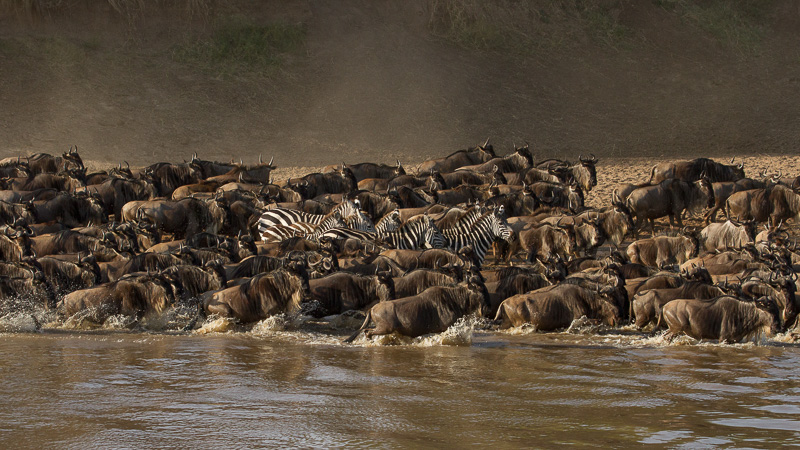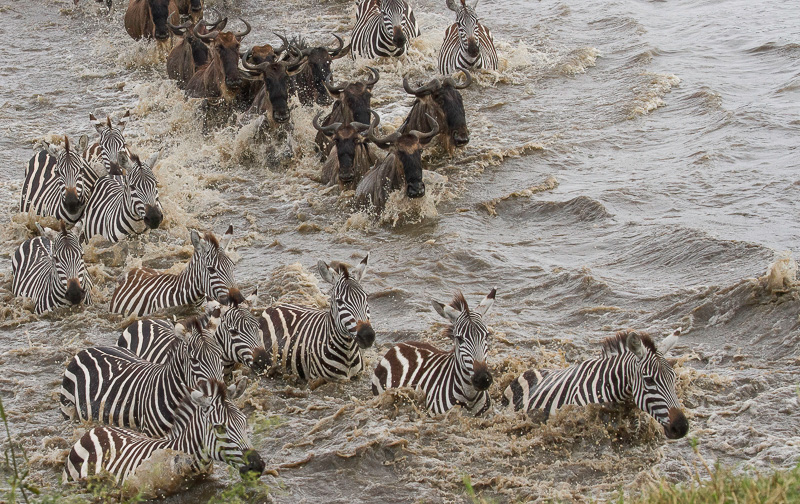Serengeti National Park

Nestled in the heart of Tanzania, Serengeti National Park stands as one of the most captivating and awe-inspiring wildlife destinations on the planet. Spanning an impressive area of approximately 14,750 square kilometers, this vast savannah ecosystem is a testament to the raw beauty and untamed wilderness of Africa. With its rich biodiversity, stunning landscapes, and dramatic wildlife migrations, Serengeti National Park has rightfully earned its place as a UNESCO World Heritage Site and remains an iconic symbol of conservation and natural heritage. Recently Serengeti proclaimed as one of the 7 Natural Wonders of Africa by Africa Geographic.
The name “Serengeti” originates from the Maasai language, meaning “endless plains,” and the park truly lives up to its name. Upon entering this remarkable expanse, visitors are greeted by a seemingly infinite horizon, stretching as far as the eye can see. The undulating grasslands, interspersed with scattered acacia trees, create a picturesque backdrop that is both serene and majestic.

A Home to the Great Wildebeests Migration
One of the park’s most spectacular events is the annual Great Migration, often regarded as one of nature’s greatest shows. Every year, millions of wildebeests, zebras, and gazelles embark on a perilous journey in search of fresh grazing lands, following the seasonal rains and lush pastures. Witnessing this mesmerizing spectacle, with herds as far as the eye can see, is a humbling experience that leaves visitors in awe of the sheer resilience and instinctual determination of these magnificent creatures.
Beyond the Great Migration, the Serengeti is home to an astounding array of wildlife. The park boasts an impressive population of lions, leopards, cheetahs, and elephants, among countless other species. The vast open plains offer unparalleled opportunities for wildlife viewing, as predators stealthily stalk their prey and herbivores graze peacefully, coexisting in a delicate balance. In addition to the iconic “Big Five,” Serengeti National Park also hosts over 500 bird species, making it a haven for avian enthusiasts.
Exploring the park can be done through various means, including game drives and even hot air balloon safaris. Each method offers a unique perspective, allowing visitors to immerse themselves in the captivating sights and sounds of the African wilderness. Whether it’s the thrill of tracking elusive predators, the joy of encountering playful elephant herds, or simply marvelling at the panoramic vistas, Serengeti National Park promises an unforgettable adventure at every turn.
To ensure the preservation of this remarkable ecosystem, the Tanzanian government, in collaboration with conservation organizations and local communities, has implemented stringent measures for its protection. These efforts include anti-poaching initiatives, habitat restoration programs, and community-based conservation projects aimed at sustainable development and the empowerment of local people. Serengeti’s conservation success story serves as a beacon of hope, demonstrating that the harmonious coexistence of wildlife and human communities is indeed possible.


Serengeti Central Plains
Serengeti Central Plains is the heartland of the Serengeti. It is the most popular area in the park for its abundant wildlife and it is the most visited region of the park all year round. The Seronera valley in the south-central region of the park, famous for big cat sightings is dotted with many kopjes and rocky granite outcrops, which makes it favorable especially for lions and cheetahs.
Westerns Corridor
The Westerns Corridor is the most remote part of the Serengeti and is covered by Savannah plains. It is formed around the Grumeti River. It is the best location to witness the Great Migration across the river.
Northern Serengeti
The Northern Serengeti has sprawling grasslands, rolling hills, and meandering rivers. The region is especially famed for its annual Great Migration spectacle, where millions of wildebeests and zebras cross the crocodile-infested Mara River in search of greener pastures. This breathtaking event attracts nature enthusiasts and photographers from around the globe, eager to witness this extraordinary display of wildlife perseverance. The Northern Serengeti also boasts an abundance of diverse wildlife, including majestic lions, graceful cheetahs, elusive leopards, and a vast array of bird species, offering a thrilling safari experience. With its unspoiled wilderness and unforgettable sights, the Northern Serengeti stands as a true testament to the raw splendour of the natural world.
